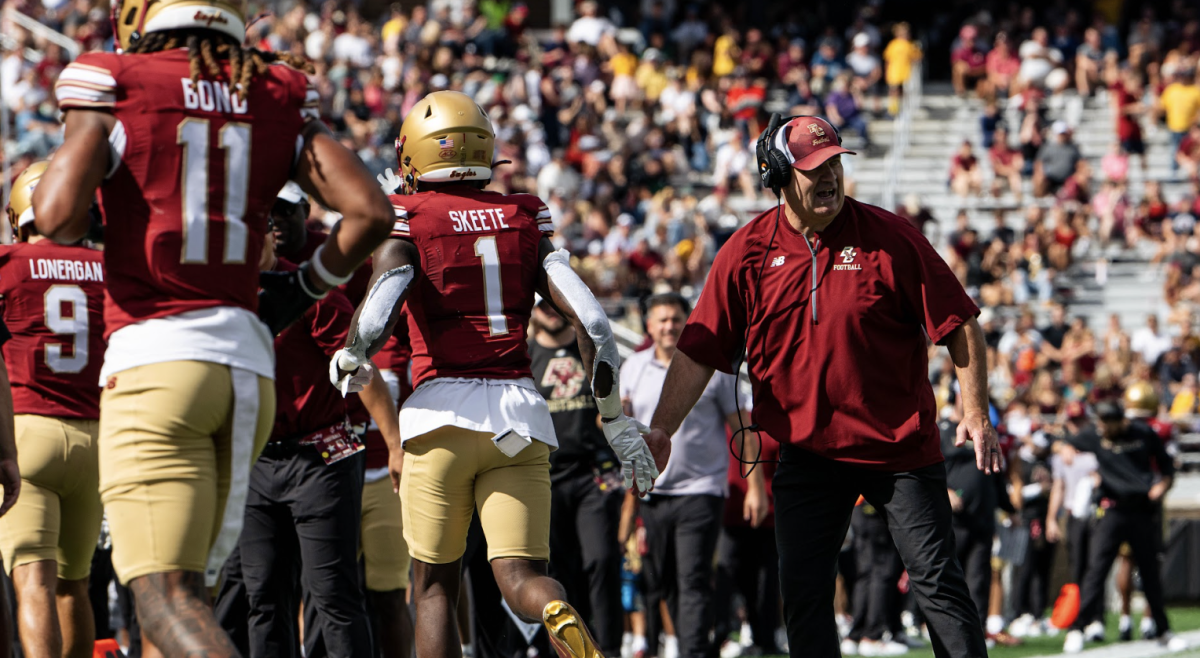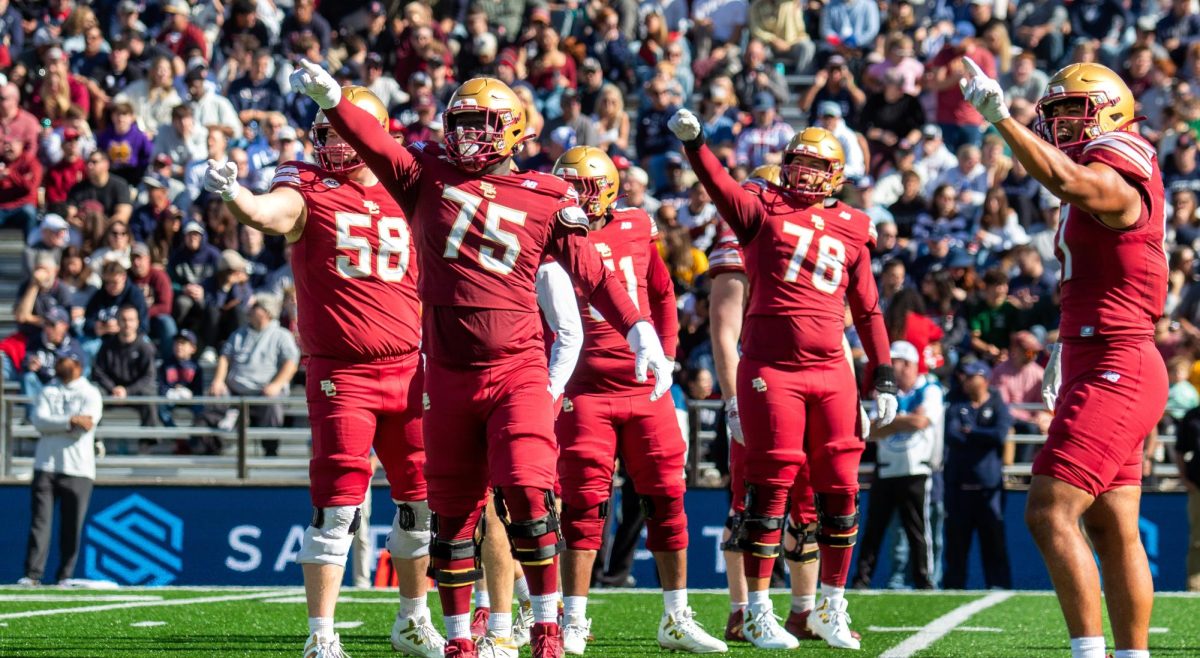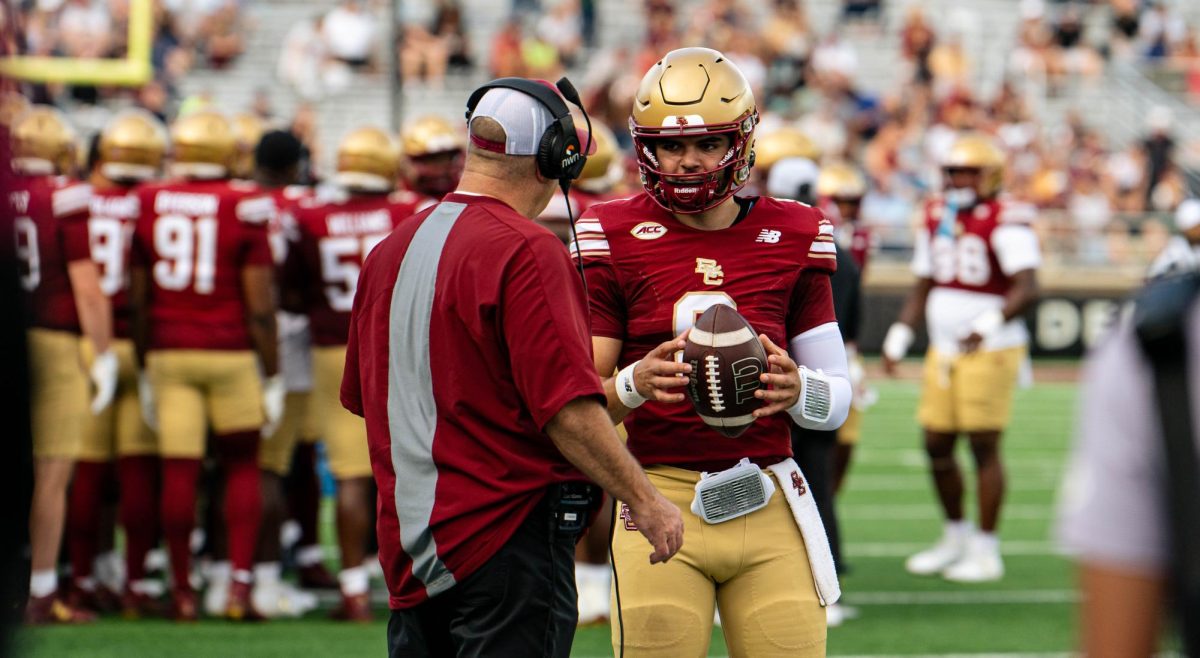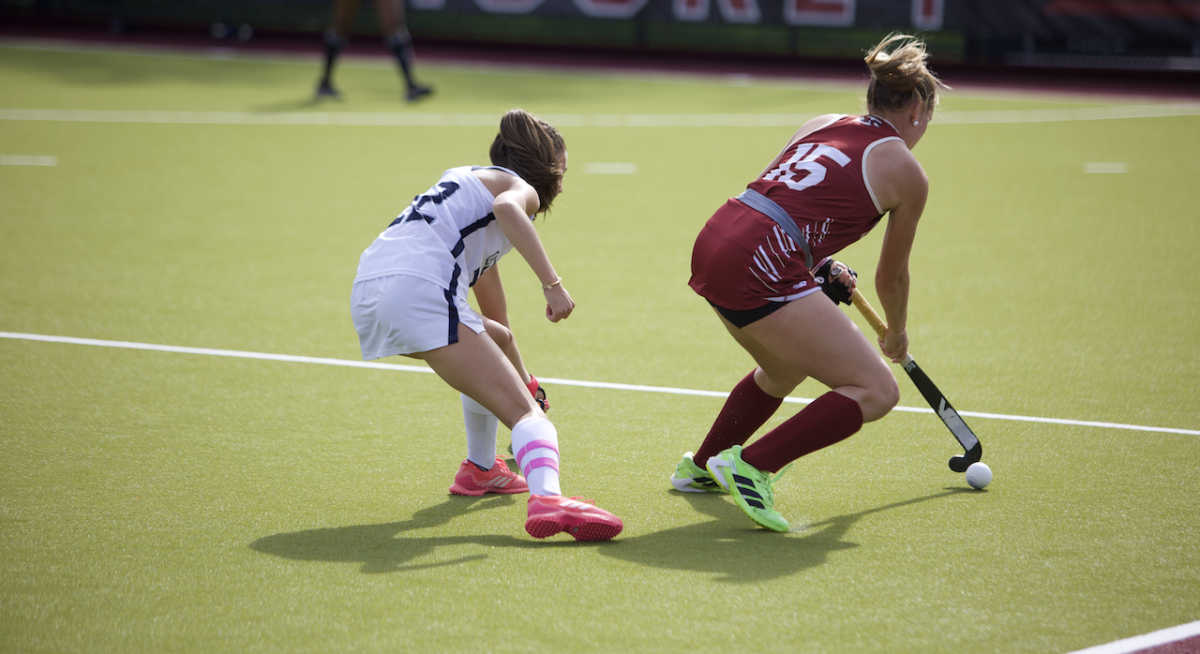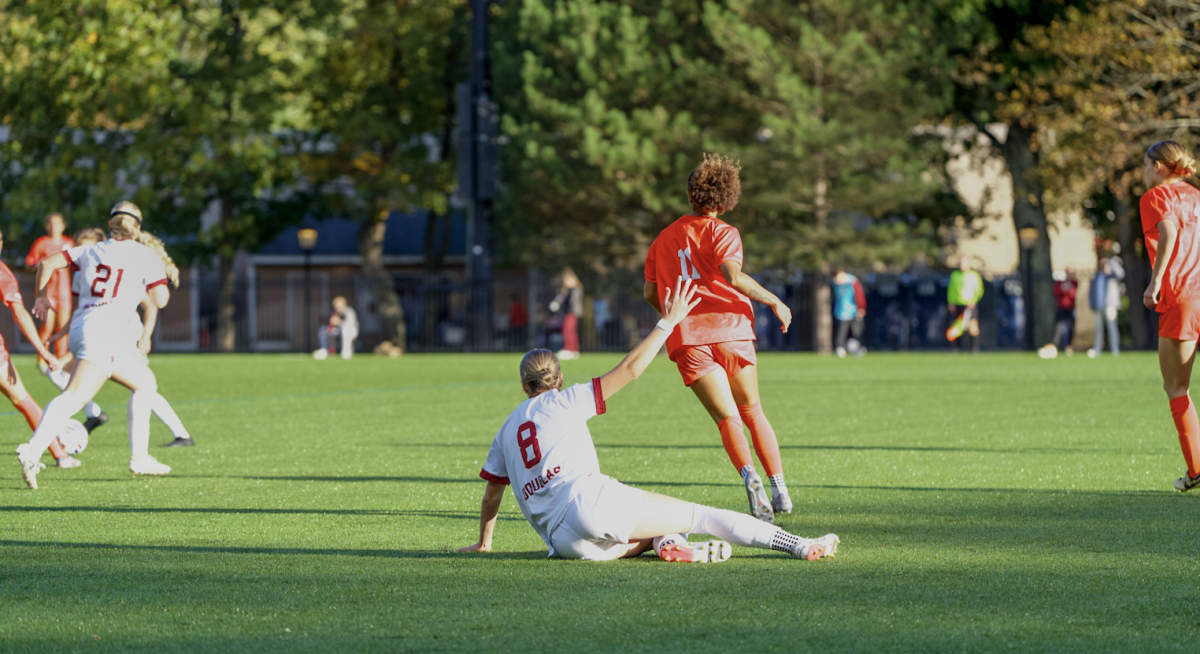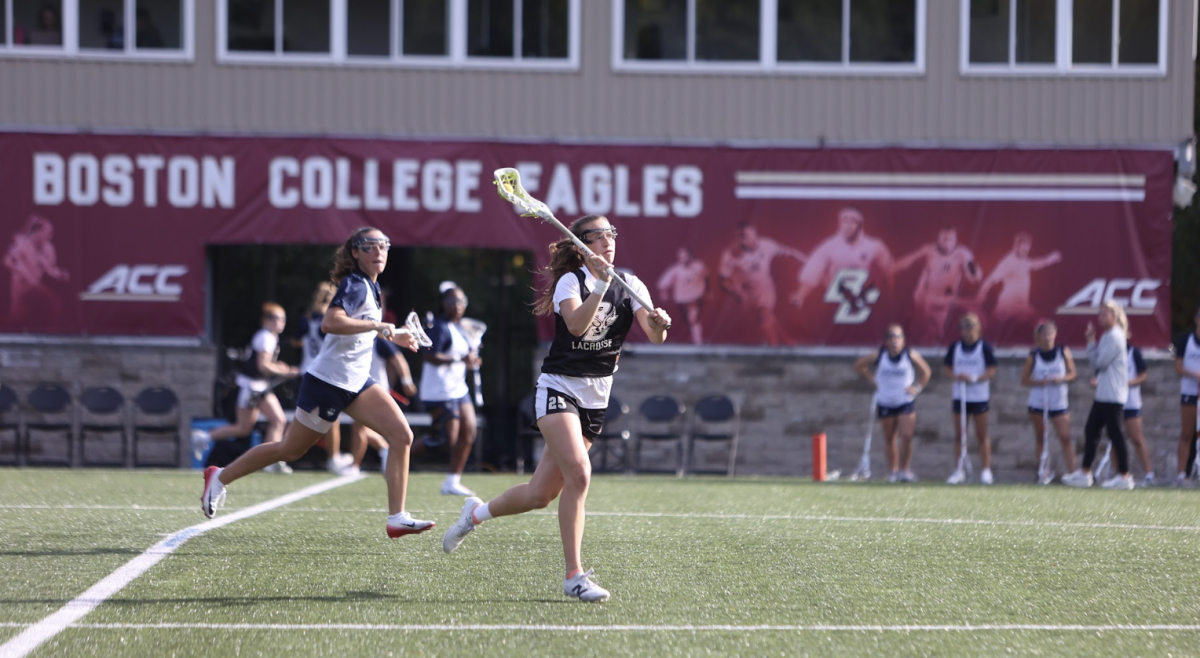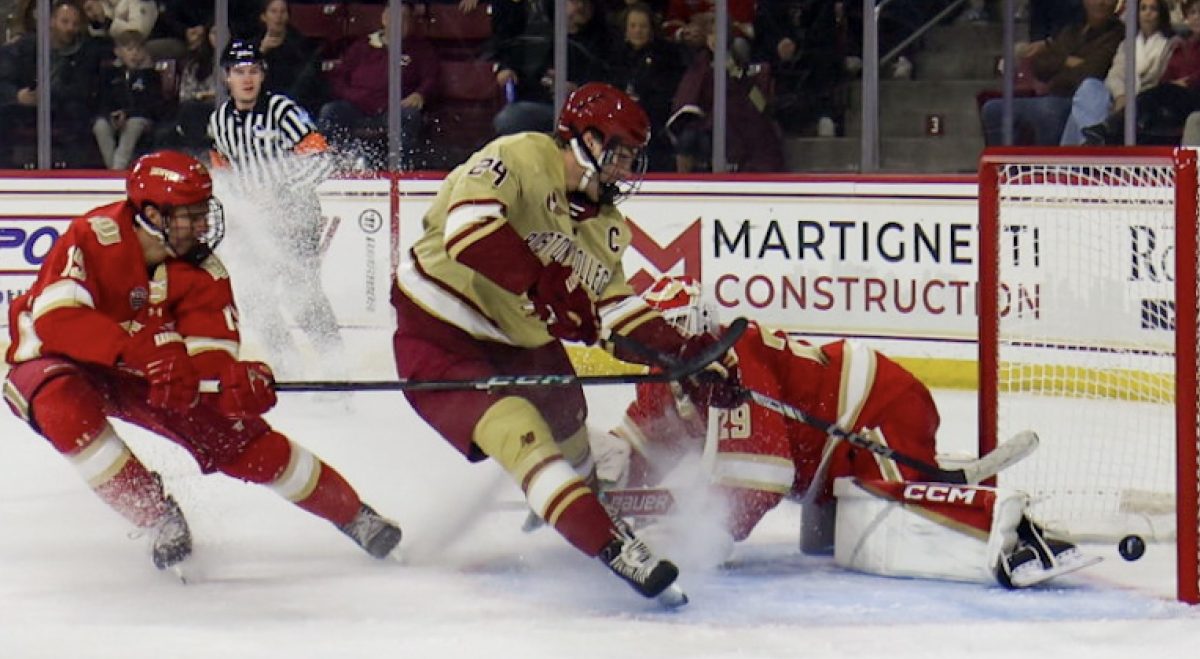Change sucks, but sometimes you have to do it to stay afloat.
Yes, people will still go to Eagles Nest—despite its updated tiling and menus—for its pressed sandwiches and deceivingly healthy salads. And yes, the football team has an out-and-out dual-threat quarterback for the first time this century. But more importantly, the men’s soccer team is playing in a diamond midfield.
In the past, teams and coaches who fail to adapt to the present have been tossed under the bus. Just look at the England teams who played 2-3-5 in the era of the W-M, and the American high school teams that use a double diamond 4-4-2 in the age of the 4-3-3 and 4-2-3-1.
Changing systems can be a nerve-racking experience for both coaches and players. It can click immediately, or it can take a long time—look at Manchester United. For the men’s soccer team, change has been … okay.
While Boston College’s opposition has not been of the highest quality, with Fordham standing off and letting the Eagles have the ball, and Iona struggling to break forward when given the opportunity, head coach Ed Kelly’s team hasn’t had to face a difficult test yet, which is both good and bad.
When the U.S. entered the World Cup this past summer, supporters and pundits never really had a sense of how good the men’s national team was. For the Eagles, the same is true, and this season could go a few ways. 1) They click and play really well within in the diamond with a fast, direct attack. 2) They get forward quickly and create lots of chances only to fluff them at the end (see the Iona game). 3) Everything breaks down and building back up to Kelly’s prime in the mid-to-late 2000s is set back another season.
Last season, and in the past, Kelly’s teams have done what most American teams do, and that’s play 4-4-2/4-4-1-1. It’s easy to teach and simple for players with little tactical understanding of the game to understand. It was the basis for coaching in England for years and a lot of high school teams play it as well. But times have changed.
In England, the only teams playing a traditional 4-4-2 are Championship, League One, and League Two squads. Few teams do it in the Premier League, besides Manchester City, but it has versatile wide players who come inside to give the Citizens numbers. The English mentality has been that the 4-4-2 won them the World Cup in 1966, and that applied until Glenn Hoddle coached the team to play 3-5-2 in the late 1990s (even though they really won it playing in a 4-1-3-2).
The bottom line is that they could have switched to the diamond, which gives you natural strength in the middle. BC has the personnel to fit that system.
For soccer coaches, one of the most important theoretical questions to answer is should their system fit their players, or should their players fit their system? As a college coach, Kelly is someone who thinks the former is correct. He can’t go out and buy what he needs, especially when there are injuries, so he has to be flexible and work with what he’s got.
The new system does not entirely fit the back four right now, but it will once Matt Wendelken gets back from injury. With a flat system, the full backs can get forward, but the wide players ahead of them make it less necessary. In the diamond, the right and left back have to move past half and get involved in the attack, otherwise everything is narrow and predictable, which is easy to defend.
Every team needs width, and players like Ado Kawuba and Mohammed Moro are suited to that perfectly. Kawuba combined well down the left with Normesinu against Fordham, while Moro did the same when Nana Boateng played off the diamond down that in the team’s opener. Both can be left backs, so whether one slides into the diamond and the other takes up the full back position is something Kelly will have to decide.
At right back, Wendelken will be more comfortable in terms of his positioning, which will allow him to advance down that side, because Giuliano Frano and Nick Butler, who have filled in for him so far, aren’t meant to be playing out there.
Also, the diamond is suited toward a pressing style, which means the team should be closing down opponents more often and higher up the pitch. To help that process, the team is using a much higher line than that of years past, because of the athleticism of Len Zeugner and Atobra Ampadu.
A diamond midfield can be used without the high line, but it’s not as effective. The goal of the high line is to squeeze the game and put your opponent under pressure. Forcing the other team into tighter spaces leads to them playing a poor pass to a teammate or a long ball that’s easy for the center backs to defend. If there is a long ball that gets behind the line, Zeugner and Ampadu have the speed to track back and defend it.
In midfield, Giuliano Frano should take over the holding midfield role once Wendelken returns from injury. Kelly will face a dilemma once that happens though, because Henry Balf has been impressive as the base of the diamond in the first couple of games. Outside of Zeiko Lewis, Frano is the most influential player on the field. He started as the right-sided shuttler in the diamond against Fordham, but is best suited to be the anchor.
As far as the front three are concerned, Lewis, Isaac Normesinu, and Phil Sandgren need to get into the flow of things. With BC threatening the most down the wings, it seems they forget that there’s space in between the lines.
Playing in the hole, Lewis must be encouraged to get on the ball in more creative positions, where he can play the killer balls that led to his 11 assists last season. Lewis has done that a few times on the counter, but is yet to do so in a buildup from the back.
Sandgren is an extremely strong forward who was partnered with Normesinu in the Fordham game. Sandgren’s physique allowed him to hold off defenders and take BC’s attack to the next step. If he and Normesinu become the first-choice strike partnership, they’ll have to work out who slashes through the channel and who holds up play. While Sandgren is stronger, he’s not always going to be available to get the ball. In fact, for most of the first half against the Rams, Normesinu was sitting in space. The instructions to the full backs and wide players in the diamond are to feed the ball into the striker’s feet almost immediately upon receiving possession.
The unpredictable play of Boateng and his defensive work rate is something to behold, but at times he does things outside of the system. In the first couple of games, he has dribbled all over the pitch and been dispossessed on multiple occasions. He draws a lot of fouls, though, and his ability to close down makes him ideal for the tip of the diamond, or as one of the shuttlers.
The entire team has to be tactically disciplined for the change to work, though. The difference between successful diamonds and unsuccessful ones is that the best ones stick together. Liverpool used it to great success last season at times, and Barcelona did it under Johan Cruyff, playing 3-4-3. The genius behind both formations was that the diamonds were very compact. In high school, teams use a diamond midfield, but with wide midfielders, which leaves a huge gap in the middle of the park for the opposition to exploit.
Additionally, the team has to move as a unit. Arrigo Sacchi, who coached the great AC Milan teams of the 1990s, made sure his center forwards and defenders were never more than 25 meters apart. Being so compact made the Rossoneri difficult to breakdown and in attack they were able to move forward together.
If men’s soccer is to get further than the first round of the ACC tournament, it will have to do the same.
Featured Image by Graham Beck / Heights Senior Staff

